Posted on: Friday August 9, 2024
By David Finch, Curator of Archaeology
I lived in Yellowknife for ten years where the seasons are definitely pronounced. Downtown Yellowknife wraps around a small lake and I used to shop at stores on the other side. Shopping in winter was easier because I didn’t have to go around the lake – I could just walk across the ice. For the rest of the year, I faced a longer trek to reach my destination.
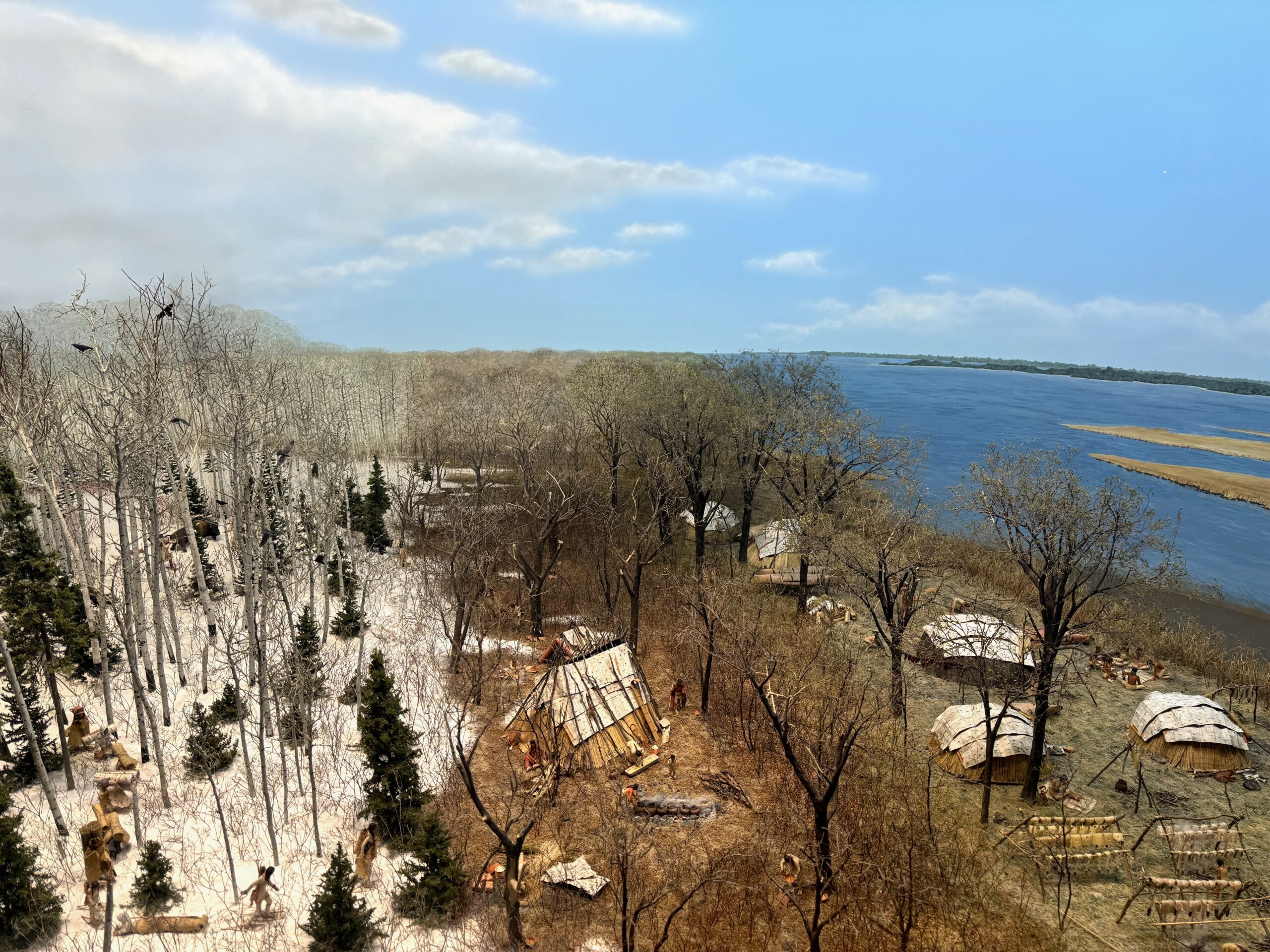
There is a concept in science called the seasonal round, which is basically how a group lives at different times of the year. Note that I did not say “in all four seasons” because that’s a Western idea of time – one traditional Cree view of the year has six seasons.
Regardless, humans and animals follow seasonal cycles that we see reflected in archaeological sites. Summer fish camps are different from fall hunting sites, and both are different from winter trapping cabins.
Image: A museum diorama of seasonal Anishnaabe campsites demonstrates the concept of a seasonal round. ©Manitoba Museum
Archaeologists also follow a seasonal round – it’s hard to dig in frozen ground or to survey when there is snow. In Manitoba, the season for fieldwork is often from May to October, with the winter months spent writing reports.
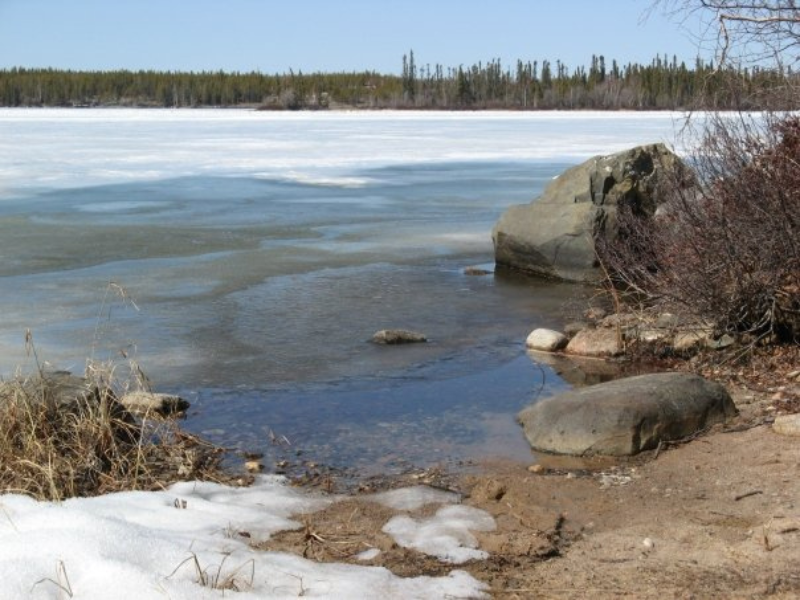
Spring break-up creates challenges for getting around, so it’s the perfect time for reports and a pot of tea. ©David Finch/Manitoba Museum
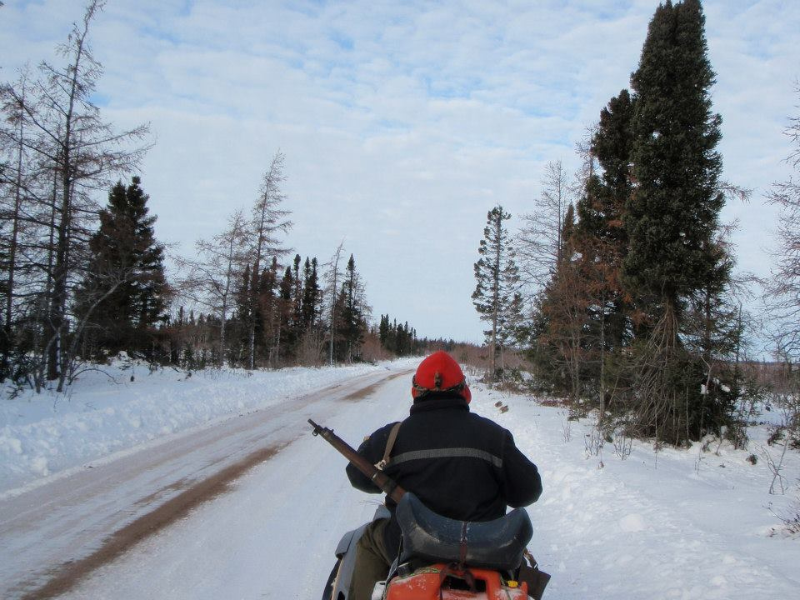
Accessing the country near Hudson’s Bay is a lot easier with snow machines. ©David Finch/Manitoba Museum
This summertime focus affects our mobility: recorded sites tend to be near highways and shorelines because most fieldwork is done during summer from trucks and boats. Ancient access was different, and winter sites might be in what we now write off as bogs.
One way around these problems is to think broadly about how, where, and when we can explore the land: oral history and traditional land use can help predict where sites may be (and where we should dig); underwater archaeology and remote sensing can reveal hidden sites; and making community connections and getting to know the land in all seasons can also point us in the right direction.
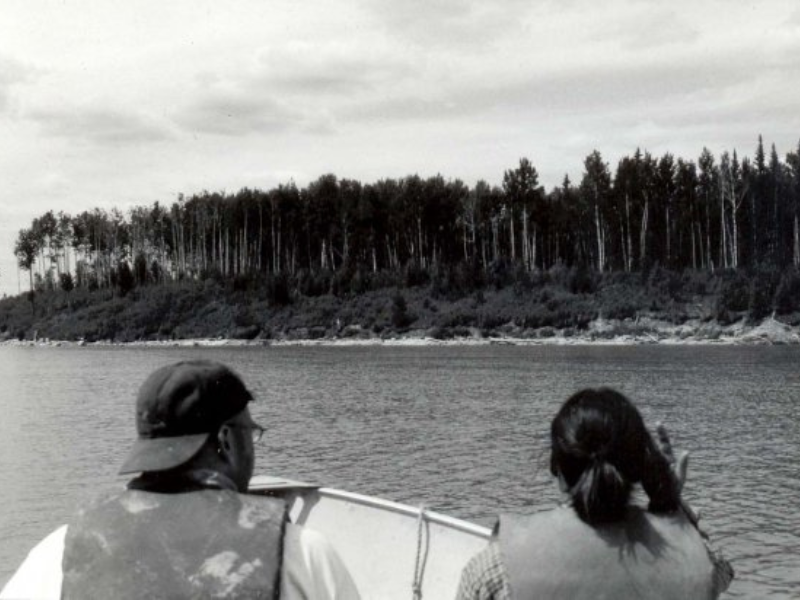
Lakes and rivers are like highways, both in ancient times and for archaeologists. ©David Finch/Manitoba Museum
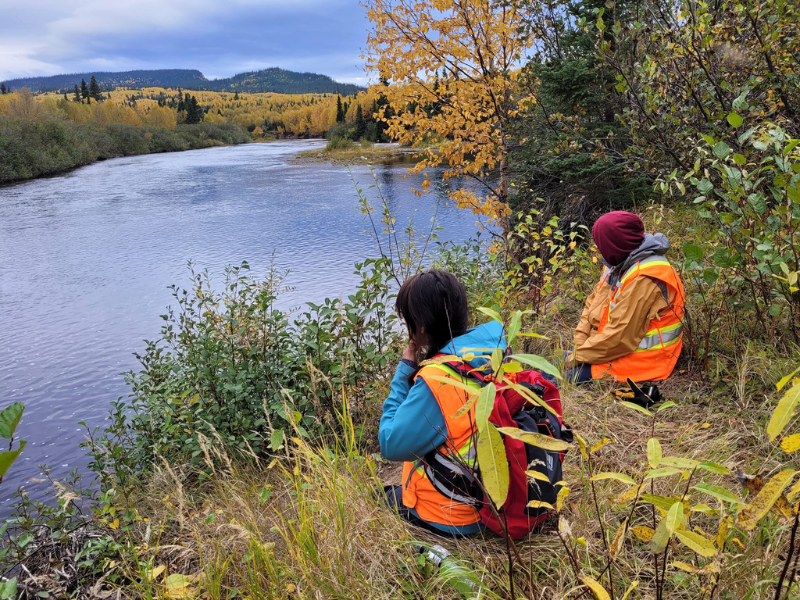
Doing community-based fieldwork in Labrador (working in fall means fewer bugs. ©David Finch/Manitoba Museum
Did you know that roughly 2.5 million (86%) of the Museum’s 2.9 million artifacts are part of the Archaeology collection? Containing objects dating from the last ice age through thousands of years of Indigenous history and the arrival and settlement of Europeans in Manitoba, the collection represents over 12,000 years of Manitoba’s history. Visit today to explore the Archaeology collection and all the stories it has to tell.



